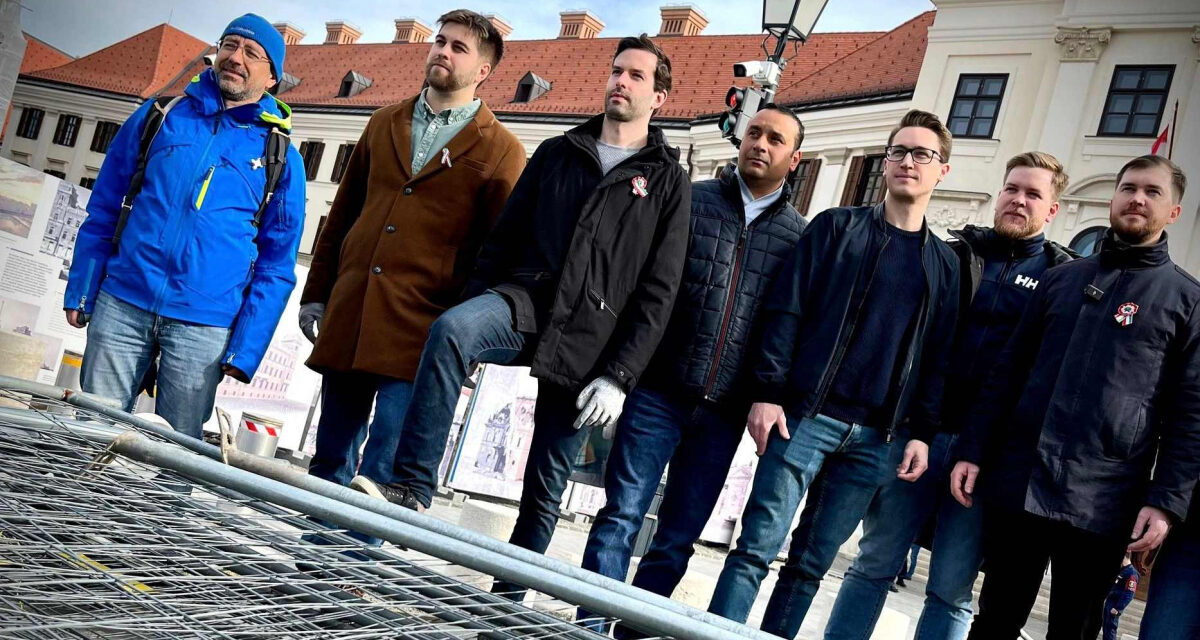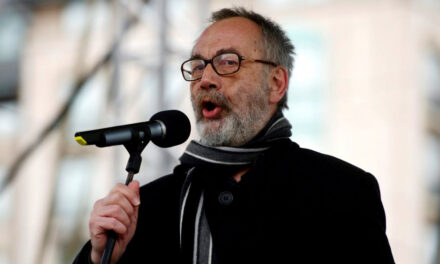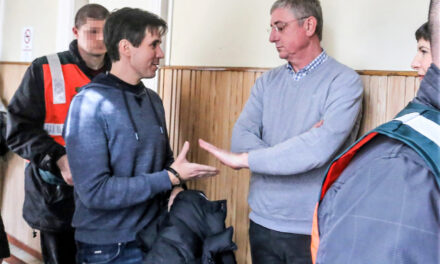What did they want to achieve with this? The "new hope", Anna Donáth, didn't even go to the taped action, which, let's say, could hardly have been implemented without consequences in Downing Street.
Although we did not receive an invitation, we were able to learn from the reports of the progressive press and thanks to Facebook that some representatives of Momentum, together with a certain Ákos Hadházy, presented a "conventional" performance at Karmelita. the who wished Hungary "perseverance" , the party leader Ferenc Gelencsér, who was pushed to the shores even by his own party, and his predecessor, András Fekete-Győr, who failed miserably in the primary election - and in a Partizán interview -, the March youth-oriented delegation took the cordon in front of the prime minister's residence . Precisely in front of the part of the street closed due to the neighboring construction works. That is
In addition, Anna Donáth, proclaimed the "new hope" of the purples, didn't even go, she didn't understand or she didn't want to give her face to the action intended for the brave, we don't know.they managed to pack away not a "classic" cordon, but a construction tool.
Although Hadházy didn't have twelve points, seven were due to a manifesto that was pasted on the building. Based on the photos, the police behaved correctly, they pretty much watched the whole thing, the recordings and photos were completed, the "independent" press workers also did their work, and then everyone went home nicely.
Here's the deal:
It is not disputed that Momentum - according to 444's report "modestly": the opposition - wanted to imitate Viktor Orbán and Fidesz's parliamentary cordon-breaking in 2007. Well, it turned out to be very weak in this form. First of all, it is worth briefly highlighting the differences between the political situation at that time and now. Let's start with the fact that the Gyurcsány government had to suffer a serious loss of social trust and support by the summer of 2007, because of the Ószöd speech and the austerity, street demonstrations, including the blood-soaked commemoration of October 23, 2006, put a moral burden on the MSZP-SZDSZ - governments. In the meantime, "budget adjustments", wage cuts, utility increases, etc. came one after the other.
Fidesz, which narrowly lost in the 2006 vote, became by far the most popular party - it's worth noting: it has been since then - while
the national police chief was able to declare it an operational area due to the anti-government protests and close the nation's main square.
An ordinary person could not set foot on Lajos Kossuth Square, the temporary measure dragged on for many months. It was not just a cordon, but rather a barricade separating the Gyurcsánys from popular anger.
The representatives of Fidesz therefore satisfied the anti-democratic situation and dismantled the cordons. What did the liberals say about this action? Péter Gusztos of SZDSZ, for example, called the action a political monkey parade."Not a single member of parliament has the authority to arbitrarily and physically intervene in this way" -
the representative stated.
On the other hand, since 2010, Kossuth tér, now renovated, could be the site of many demonstrations, where thousands and tens of thousands could express their displeasure against the governing power. Áron noÁr Molnár or István Pukli shook their fists at Orbán on the stage in front of the Parliament, but even Ferenc Gyurcsány could pitch a tent and go on hunger strike in the square to his heart's content.
Today, the possibility of protests and demonstrations is also professionally secured by the police, and there are plenty of prominent locations. Another issue is that, due to the more modest interest, nowadays they prefer to organize demonstrations on relatively narrow bridges in Budapest, but if they wanted, they could go almost every day in front of the Parliament, which symbolizes Hungarian democracy. Their souls are on it.
An important difference between Fidesz at that time and Momentum today is that, while the support of the former at the time of the 2007 cordon-breaking was between sixty and seventy percent among certain party voters, i.e. it had massive social support behind it, Gelencsérék now does not even reach ten percent they reach That is
to put it mildly, they do not articulate significant dissatisfaction - against Fidesz.
Another addition is that Hungarian society was forced to experience a serious crisis in both periods, but at that time it was specifically caused by bad governance - the global crisis was even further away - but now, on the other hand, we are in a difficult situation due to war, sanctions and the energy situation, i.e. largely due to external factors situation. In addition, according to most surveys, the voters do not even ask for the formations challenging the government, which were now united in the elections of last April. They do not turn to them, they are not interested in them, and moreover, the people involved "taste" each other, while the strongest Gyurcsány party feasts on the others.
A small addition is that the Karmelita is not a suitable location for taking action against the "authority", at least if we consider that the same action could have been attempted by Fekete-Győrék in the vicinity of, say, the British Prime Minister's residence in Downing Street or the French Élysée Palace to carry out.
And from this position, it is quite comical to speak in the name of the people, to mention the dismantling of the system,
moreover, in such a way that even the party itself does not stand united in support of the attempt intended to be spectacular, which can be interpreted as a media balloon. This is a replacement act at its best, another episode of Facebook politicization meant to replace what is being said in terms of content and substance, a desperate attempt by one of the actors of a fragmented political field to grab attention. This is a tank coup at its best!
Featured Image: Facebook












